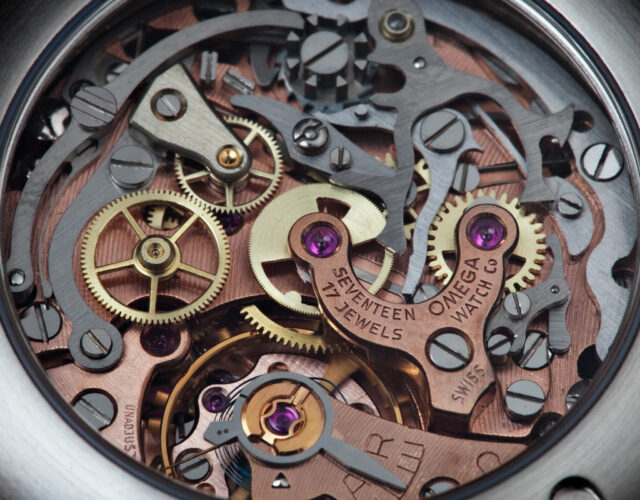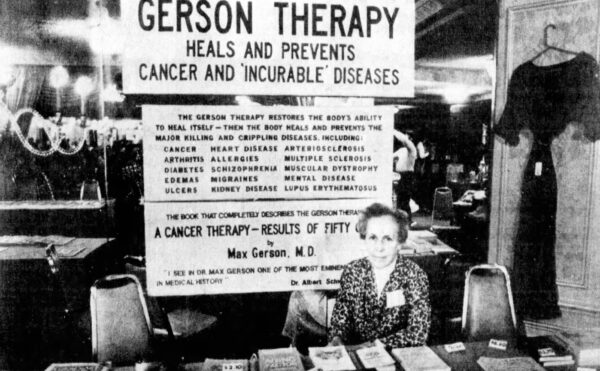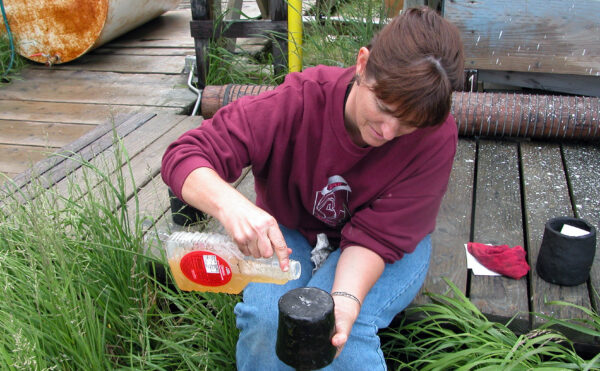Abbot Suger, one of the most powerful men in medieval France, had spent years renovating and embellishing the ancient abbey church of Saint Denis near Paris, the burial site for the kings of France. Tall, pointed windows in the new Gothic style let sunlight stream in, illuminating the high altar, which glittered with gold and jewels. Kings and bishops had stripped the rings from their fingers, dedicating their wealth to the glory of God. For Suger the exquisite gemstones were portals to the divine.
—Abbot Suger, On What Was Done in His Administration
(1144–1148 CE)
Gemstones have an allure unlike any other material. Their rarity, luster, and intense colors still enthrall us. People have searched for gems in the far reaches of the earth and pondered their origins for millennia. Craftsmen and jewelers have learned how to shape them and for at least 2,000 years to copy the real thing. In more recent times researchers have perfected the art of the fake in their pursuit of science.
The Dew of Heaven
Famed Roman naturalist Pliny the Elder, who died in the eruption of Mount Vesuvius in 79 CE, wrote in his Natural History, “For very many people a single precious stone can provide a matchless and perfect view of nature.” Making counterfeits of this perfection was a “fraud against society.” Pliny criticized those authors who “outline how emeralds and other transparent gems can be produced by coloring rock crystal; or . . . how other gems can be made from other precious stones.”

A model wearing a jeweled cap, ca. 1951.
As Pliny’s description suggests, valuable gems have been traded and imitated throughout recorded history. Since gemstones often came from distant lands, their exotic origins inspired theories and tall tales. Rock crystal, the pure, translucent quartz highly valued in the ancient world, was “found only where the winter snows freeze solid,” leading Pliny to surmise that it was a type of ice. The collection of medieval travel accounts known as The Travels of Sir John Mandeville, compiled in England about 1360, stated that diamonds grew in India where “they be nourished with the dew of heaven . . . and bring forth small children, that multiply and grow all the year.”
Ideas about gemstones and other minerals growing organically, either sprouting from seeds like plants or somehow fermenting in the ground, prevailed until the mid-17th century. Though researchers eventually realized that many minerals were formed by the gradual buildup of inorganic material under high heat and pressure deep within the earth, it took many years to fully comprehend their structure and composition. Jewelers and artisans provided practical knowledge along the way, derived from centuries of cutting and faceting rare gems to highlight their natural beauty and from long experience in crafting believable imitations from glass and quartz.
The modern science of crystallography began with an 18th-century French priest, René-Just Haüy, who took up the study of botany and mineralogy in Paris about 1770. While examining a friend’s prism-shaped specimen of calcite—a crystalline form of calcium carbonate—the mineral slipped from his hands and shattered on the floor. As he gathered up the fragments, he noticed their jagged edges all took the form of a slanted cube, a shape he had seen in another variety of calcite. Haüy returned to his own collection, took up his hammer, and broke apart several calcite specimens, finding the identical “primitive form” in each one.

A Bengali folktale tells of how rubies were formed from the blood of a woman living at the bottom of a whirlpool.
Other researchers at the time were determining the chemical makeup of gemstones. They soon realized that most gems gain their brilliant colors from trace elements embedded in what would otherwise be a colorless mineral. Much of this knowledge was driven by the discovery of new chemical elements, particularly metals. French chemist Nicolas-Louis Vauquelin, for instance, isolated the elements chromium and beryllium in the 1790s. Vauquelin identified chromium in both rubies and emeralds and beryllium in emeralds. Other scientists discovered that rubies are composed of alumina (aluminum oxide) and are red because of trace amounts of chromium. Blue sapphires are also made of alumina, colored by iron and titanium. Emerald is beryl (a mineral composed of beryllium, aluminum, silicon, and oxygen), gaining its characteristic green from chromium or vanadium. With this understanding researchers began to imagine gemstones as potentially useful substances that could be made in a laboratory rather than rare, mysterious commodities from faraway countries.
Growing Gems
Even armed with this knowledge, scientists could not immediately create a ruby, sapphire, or emerald. Growing gemstones—reproducing their composition and re-creating the extreme heat and pressure found below the earth’s surface—was an immense challenge requiring specialized tools and knowledge. But because the possible financial rewards were great, scientists throughout Europe and the United States chased this elusive goal. The race was particularly intense in France during the late 19th century.
Edmond Frémy took the first major step on the way to true synthetic gemstones. A former student of famed chemist Joseph-Louis Gay-Lussac, Frémy taught chemistry and ran the chemistry laboratory at the Museum of Natural History in Paris. After many years of work with his assistant Charles Feil, Frémy managed to grow ruby crystals, publishing the first set of results in 1877. The two men used large crucibles made of fireclay, formulated to survive very high temperatures, in which they heated alum (ammonium aluminum sulfate) with red lead (a type of lead oxide), silica, and potassium dichromate. After this mixture was held at “red heat” for 20 days in a furnace, ruby crystals formed. Though the resulting crystals were clear, intensely colored, and as hard and dense as natural rubies, they were also very small, thin, and brittle.
After Feil died in 1876, Frémy carried on his research with a new assistant named Auguste-Victor-Louis Verneuil. The spirited son of a watchmaker-mechanic turned photographer, Verneuil took evening science classes while working for Frémy, eventually earning a doctoral degree. The researchers continued to refine their ruby-making techniques, achieving some success. Frémy praised their creations in an 1891 publication as “transparent, deep and brilliant, crystallized in rhombohedrons, presenting an absolute purity and capable of being compared to natural rubies.”
Despite years of work and innumerable trials the crystals remained tiny—barely the size of a nail head. While certainly attractive, these rubies were not large enough for practical use in jewelry, nor could the laboratory produce them on an industrial scale. A Paris jeweler did set some of the stones into brooches, and others were used as watch jewels, but these were only limited trials.
In 1885, while Frémy and Verneuil were in the thick of their experiments, a dealer in Geneva began selling many large, high-quality rubies, marketing them as natural gems worth thousands of dollars per carat. French jewelers, concerned about this disruption of the ruby market, asked scientists to examine the stones. Charles Friedel, a chemist and mineralogist at the Sorbonne, reported that the gems appeared identical to natural rubies except when viewed through a microscope. Friedel saw minute opaque spheres, bubbles of gas trapped within the stones during a melting or fusion process. These “Geneva rubies” had not grown underground; they had been formed in a laboratory. Their maker and the location of the laboratory remain mysteries to this day.
Gemstones are known for their intense colors: ruby red, emerald green, sapphire blue. Surprisingly, some gemstones also glow.
The French Syndicate of Diamonds and Precious Stones agreed with the findings of Friedel and others. The organization ruled that gem dealers and jewelers had to label the rubies “artificial”; selling them as “precious” became a fraud punishable by law. The syndicate also declared all previous sales of these rubies invalid, forcing sellers to refund large sums to their customers. Even with the deception exposed there was still demand for these gems. Calling the rubies “artificial” had not changed their captivating appearance, though it had dropped their price to the equivalent of about $60 to $100 per carat. People who could not afford the luxury and cachet of natural gemstones were happy to buy jewelry made with Geneva rubies.
Back at the Natural History Museum, the Geneva rubies inspired Verneuil to try a different approach to crafting synthetic gemstones. Rather than using Frémy’s crucibles he employed blowtorches fueled by a hydrogen-oxygen or gas-oxygen mixture. These blowtorches, which give Verneuil’s process its name of “flame fusion,” provided a consistent, controllable heat source capable of reaching exceptionally high temperatures. Such extreme temperatures were necessary since the aluminum oxide used as the “feed” for the process had a melting point of 2,050°C (3,722°F).
Verneuil continued to work in his mentor’s laboratory, while also perfecting his own flame-fusion process, until Frémy’s death in 1894. He finally published his method in 1902 after decades of working on the problem. Verneuil had devised an apparatus that regulated the flow of feed powder into the torch whilesimultaneously lowering the cone where the melted material accumulated. These slow, steady movements, along with careful adjustments of heat and oxygen flow throughout the process, helped ensure the formation of regular “boules,” or pear-shaped balls of ruby. A technician peering through a small window made of fireproof mica could observe the process and shut off the flame at exactly the right moment to avoid cracking the boule.
If all went well, the result after two hours was a 1-inch boule about 15 carats in weight (approximately 3 grams, or 0.1 ounce) that could be cut up into several faceted rubies. These synthetic rubies could equal the size of the largest natural rubies. They had the same intense color and clarity as their earth-born cousins, as well as identical chemical composition and molecular structure. Verneuil’s best synthetic gems also lacked the irregularities and gas bubbles of the Geneva rubies. At long last human beings had successfully reproduced one of nature’s rarest creations.
Verneuil was soon also able to make synthetic sapphires with flame fusion by adding iron and titanium to the feed powder. His synthetic gems found appropriate homes in a wide range of inexpensive jewelry and as the tiny “jewels” in mechanical watches. Because they are so dense and hard, synthetic gems are the ideal ball bearings and pivot points for eliminating friction between small metal gears and other interconnected parts. Wherever metal meets metal in a watch, a jewel is needed; in fact, the familiar ticking sound comes from jewels striking the teeth of a wheel.
Ruby Beams
Verneuil’s process inspired other researchers and manufacturers to devise methods for creating synthetic gemstones. From the beginning these gems had many applications beyond use in jewelry and watches. Because they were inexpensive and widely available, they could be used anywhere a hard, dense substance was needed: in industrial abrasives, for machining and cutting tools, and as bearings for precision instruments, such as pumps for chemical analyses. Yet the optical properties of the synthetics have led to what may be their most dramatic use.
Wherever metal meets metal in a watch, a jewel is needed; in fact, the familiar ticking sound comes from jewels striking the teeth of a wheel.
Most people think of lasers as gadgets that produce intense beams of light. But lasers are more than just very bright flashlights. They emit a highly directional and focused single color of light. This coherent, monochromatic beam allows lasers to perform a variety of tasks, including delicate eye surgery, industrial cutting and welding of metals, and inscribing and reading CDs and DVDs. Lasers today use many materials: solids, such as the gallium arsenide in laser pointers; gases that emit light when electrified; and liquid chemical dyes. The very first laser, however, had a synthetic ruby crystal at its heart.
Why was there a ruby in a laser? Gemstones are known for their intense colors: ruby red, emerald green, sapphire blue. Surprisingly, some gemstones also glow. In the past this was considered a magical property. Writing in the 12th or 13th century, the Chinese trader Chau Ju-Kua said of the king of Ceylon, now Sri Lanka, “The king holds in his hand a jewel five inches in diameter, which cannot be burnt by fire, and which shines [in the darkness of] night like a torch. The king rubs his face with it daily, and though he were passed ninety he would retain his youthful looks.”
The glow of rubies and other gemstones is not just a medieval fable. Rubies do glow when illuminated by visible or ultraviolet light, turning from a pale red or pink color to a deep red. This glow, called fluorescence, sometimes continues after the gem is no longer illuminated, a related phenomenon called phosphorescence. Researchers have been fascinated by the fluorescence and phosphorescence of rubies since at least the 18th century. During the 19th century several well-known scientists, including William Crookes in England and Henri Becquerel and Paul-Émile Lecoq de Boisbaudran in France, argued over whether the phosphorescence in a ruby originated from the alumina or the chromium in the gem.
Electrons in trace elements cause not only the color but also the fluorescence of gemstones. Electrons absorb and release energy as light. In the case of gemstones electrons are restricted in their choice of light; they can only absorb light of a specific color. Rubies look red because they contain trace chromium that absorbs blue and green light, leaving red light. The chromium in emeralds, by contrast, absorbs blue and red light, leaving green light. The dance of electrons absorbing and emitting light gives gemstones their brilliant colors.
The word laser is an acronym for “light amplification by the stimulated emission of radiation.” For a ruby laser to work many of the electrons in the gem need to be energized with light. Then, when hit with a small amount of light of just the right wavelength, all the energized electrons will simultaneously deenergize, emitting light of the same wavelength. Thus, a small amount of light becomes amplified by stimulating all the energized electrons to release light at the same time.
The origin of the laser is a contentious subject complete with a nearly 30-year patent lawsuit, but it certainly arose from American physicist Charles Townes’s studies of microwaves at Columbia University during the early 1950s. Townes and his coworkers developed a method of generating “masers,” coherent microwaves of a single frequency used in high-precision atomic clocks. Although the laser is conceptually similar to the maser, the laser was technically and scientifically a much more challenging project.
Even though no one knew exactly how a laser would be useful (one researcher later quipped that it had been “a solution looking for a problem”), the competition to create the first one was intense. At least four or five different research groups in the United States, including Townes’s, pursued different approaches. Because of their fluorescent properties, rubies initially seemed to be good candidates for laser technology. In addition to being inexpensive, commercially available synthetic rubies gave researchers control over geometry and composition that natural gemstones could not offer. Studies of rubies done in the late 1950s at Bell Labs in Holmdel, New Jersey, dashed researchers’ hopes; the ruby’s fluorescence was not strong enough for practical applications.
Theodore Maiman, a physicist at Hughes Research Laboratories in California, soon realized the Bell Labs’ studies contained errors. He believed that synthetic rubies would, in fact, make excellent lasers. He was right.
Maiman’s design for a laser was simple: a synthetic ruby rod from Union Carbide that was three-eighths of an inch long and three-quarters of an inch wide, with mirrored ends. Surrounding the ruby tube was a flash lamp similar to those used for high-speed photography. Once the intensity of the flash reached a certain threshold, the energized electrons in the ruby simultaneously released their energy. Amid the blaze of the flash lamp and the glow of the ruby fluorescence, a pulse of coherent red light emerged from one end of the ruby rod. This momentous “red spot on the wall,” as Maiman described it, launched a new era of invention. A natural gemstone would have failed at the job; only a synthetic ruby was pure and clear enough to make the first real laser. Edmond Frémy, Auguste Verneuil—and perhaps even Abbot Suger—would have been proud.
As Seen on TV: Cubic Zirconia
“It will become an instant favorite, turning heads and inspiring gasps of envy.”“Even perfect natural diamonds have flaws.”“Enjoy the magic and the pride.”
Television viewers may remember the classic commercials for cubic zirconia jewelry from the 1970s and 1980s—the classical music playing in the background, the announcer emphasizing the extra-low price for these stunning heirlooms (with complimentary matching earrings), the admiration of friends—all filmed in soft focus except for the stones themselves. Cubic zirconia stones are far cheaper than diamonds, but their over-the-top luster, fire, and brilliance made them look unearthly (particularly after midnight). But what are they?
Cubic zirconia is a curious substance, a form of zirconium dioxide similar to diamond in structure. Zirconium dioxide is found in nature, generally as a mineral known as baddeleyite, but naturally occurring cubic zirconia is much rarer than diamonds. Researchers originally grew single crystals of synthetic cubic zirconia with lasers in mind. While they were never used in lasers, the crystals were quite lovely, even outsparkling genuine diamonds.
Introduced into the low-end jewelry market in 1976, cubic zirconia continues to be the most popular imitation diamond because of looks and modest cost (although it has a competitor in moissanite, a form of crystalline silicon carbide that is even more diamondlike). By 1980 nearly 50 million carats (11 tons) of cubic zirconia were being produced worldwide—a success that almost certainly inspired gasps of envy.




